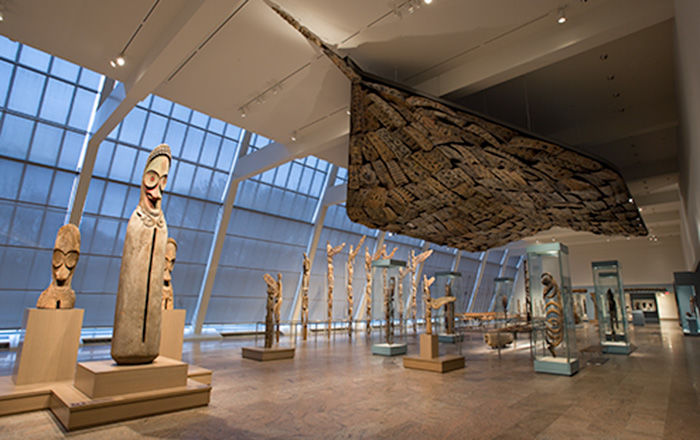Uphiso (beer vessel)
Nesta Landeleni Nala South African
Not on view
Among the foremost Zulu ceramicists of the twentieth century, Nesta Nala was a prolific artist who was among those who shepherded the transition from pre-1960s pottery produced primarily for local use, to post-1980s ceramics for regional and global markets. Knowledge and expertise of Zulu ceramics has traditionally been passed down from mother to daughter. Nesta learned from her own mother, Siphiwe, who had in turn been instructed by her co-wife, MaNgubane Nala, and their mutual mother-in-law, Ntombi MaKhumalo Nala. While Siphiwe's and Nesta's works share a number of similarities, Nesta's creations are defined by the use of single-line incisions, cross-hatching at the borders, and the production of a particular type of vessel known as an uphiso (pl. izimpiso), or beer vessel.
The refined aesthetic of this example is representative of Nesta's early works, which featured linear geometric and vegetal motifs on the upper part of the body, leaving the neck and lower half of the vessel unadorned. The incision patterns applied to later works gradually covered more of the vessel, including the neck, rendering them less functional as beer vessels (which would need to be wiped around the rim after pouring). The dark, burnished surface, carefully compressed and smoothed before firing, created the ideal conditions to attract and protect amadlozi (ancestors). Those ancestors were invoked during major life events when izimpiso were displayed on the umsamo (family altar) and used to serve sorghum beer. The creativity and innovation of Nesta's oeuvre has inspired later ceramic artists, including Clive Sithole and six of her seven children. Indeed, Sithole has cited that he studied and emulated the "nearly spherical perfection of the blackened, burnished vessels" of Nesta Nala. He later sought her mentorship, and he continues to collaborate with two of her daughters, Jabulile and Thembile. Nesta's profound legacy is thus continued through both her hereditary instruction and through her relationships with other contemporary artists.
This image cannot be enlarged, viewed at full screen, or downloaded.
This artwork is meant to be viewed from right to left. Scroll left to view more.

